VoIP security isn’t academic anymore. In 2025, the average data breach cost hit $5.08 million per incident, based on IBM/Ponemon’s analysis of 600 breached organizations.
Telecom feels the pain directly: $38.95 billion leaked to fraud in 2023 alone, about 2.5% of industry revenue.
As companies shifted from PSTN to SIP, the attack surface widened: signaling can be scraped, RTP streams can be sniffed, and DTMF can leak payment digits if media isn’t protected. Encryption should solve that, yet many teams assume trunks are “secure by default.” They aren’t. Most stacks still start on UDP 5060 with clear-text SIP and unencrypted RTP unless TLS and SRTP are explicitly configured.
This article clears the fog. It explains what SIP trunk encryption really is (TLS for signaling, SRTP for media), how it works in practice, how to implement and verify it, and what to ask providers before you turn it on. Expect concrete steps, quick checks with packet captures, and policy guardrails that stop silent downgrades.
Let’s start with why SIP trunk encryption moved from “nice to have” to non-negotiable.
Why SIP Trunk Encryption Isn’t Just an Option Anymore
VoIP attacks have evolved far beyond nuisance spam calls. In 2024, NCC Group recorded a 32% rise in VoIP-specific breaches, many targeting SIP signaling to hijack or reroute calls for toll fraud. In one high-profile case, a European telecom carrier lost over €1.2 million in a single weekend after attackers exploited an unencrypted SIP interface and redirected international calls through premium routes.
Unencrypted SIP traffic exposes more than just voice. SIP headers often carry caller IDs, device IPs, and even internal network details, while RTP streams can leak DTMF tones, meaning card numbers, access codes, and PINs can be decoded with basic sniffing tools. Once attackers capture SIP packets, they can reconstruct full conversations or impersonate endpoints.
The Verizon 2024 Data Breach Investigations Report highlights that 74% of telecom breaches involve human or configuration errors, with “unencrypted or misconfigured signaling” ranking among the top causes. ENISA’s latest Threat Landscape for Telecommunications adds that VoIP eavesdropping and spoofing attempts doubled between 2022 and 2024, driven by low-cost interception kits easily deployed on compromised routers.
VoIP security, in short, is no longer about compliance checkboxes. It’s about preventing silent interception, where neither the caller nor the business ever realizes a breach occurred.
Regulatory Pressure and Compliance
Encryption is no longer optional for regulated industries. Financial institutions, for instance, fall under PCI-DSS, which explicitly requires encryption of any channel transmitting payment data, including DTMF tones over SIP. Healthcare organizations under HIPAA must secure both stored and transmitted patient information, making TLS and SRTP essential for telehealth calls and contact centers. Under GDPR, any unencrypted transfer of personally identifiable information (PII) can trigger penalties reaching up to €20 million or 4% of global turnover.
Beyond fines, the damage to trust can be catastrophic. A healthcare provider that leaks patient call recordings or a bank that exposes customer numbers doesn’t just pay compliance penalties, it loses credibility overnight. Customers rarely distinguish between “data breach” and “VoIP breach.”
For modern enterprises, SIP trunk encryption isn’t a technical preference, it’s a legal expectation. Regulators, auditors, and end users all demand it, and failing to implement it means accepting measurable financial and reputational risk.
SIP Trunk Encryption Explained Simply
SIP trunk encryption rests on two independent layers: one for signaling and one for media.
Transport Layer Security (TLS) safeguards the SIP signaling process, everything involved in setting up, managing, and ending calls. It works like a sealed envelope: SIP messages containing phone numbers, routing data, and authentication credentials travel inside a digitally signed, tamper-proof wrapper.
Secure Real-Time Transport Protocol (SRTP) encrypts the actual voice packets once a call begins. Think of it as the muffled conversation inside the envelope, even if someone intercepts the packets, the speech remains unintelligible.
Using both layers together is non-negotiable. Encrypting signaling only hides who’s calling but still leaves audio streams open for capture. Encrypting just media still reveals metadata such as caller IDs, IP addresses, and call duration. True SIP trunk encryption means TLS and SRTP working in tandem, without one, the other’s protection collapses.
Common Misconceptions About SIP Encryption
Many businesses believe their SIP trunks are already secure when they aren’t. Encryption isn’t enabled by default on most PBXs or SBCs; default ports like UDP 5060 still transmit signaling in plain text. Unless explicitly configured for TLS 5061 and SRTP, calls remain open to interception.
Another misconception is that using a “SIPS:” URI guarantees full encryption. In practice, it only tells the client to attempt TLS, if either endpoint doesn’t support it, most systems silently downgrade to unencrypted SIP without alerting administrators.
A VPN tunnel also doesn’t replace SIP-layer encryption. VPNs secure the network path but don’t protect against internal sniffing or misrouted traffic between SBCs. TLS and SRTP operate at the application level, ensuring end-to-end confidentiality independent of the underlying network.
Real-world misconfigurations prove the risk. In 2023, a European contact center discovered its “encrypted” SIP calls were falling back to UDP after a certificate renewal failed. Logs showed the PBX automatically retried over port 5060, leaving every call unprotected for months. Proper TLS verification and certificate monitoring would have caught it.
How SIP Trunk Encryption Works in Practice
Encrypted SIP communication follows a defined handshake between your PBX, the provider, and the remote endpoint. Each stage ensures signaling and voice packets remain confidential and authenticated:
- SIP INVITE over TLS
When a call starts, the PBX sends a SIP INVITE message over a TLS-encrypted channel (typically port 5061). This secures signaling, including caller IDs, phone numbers, and routing headers, from interception or tampering. - Certificate Validation
The PBX validates the provider’s digital certificate to confirm it’s connecting to an authorized SIP server, not a spoofed one. Certificates are verified against trusted Certificate Authorities (CAs), and expired or self-signed ones trigger alerts or rejections. - Key Exchange (SDES or DTLS-SRTP)
Once signaling is secured, both endpoints negotiate encryption keys for the media stream.
- SDES (Session Description Protocol Security Descriptions) exchanges keys within the TLS-protected SIP signaling.
- DTLS-SRTP (Datagram Transport Layer Security) performs a separate handshake over UDP to derive keys dynamically, improving forward secrecy.
- Encrypted RTP Transmission
After key exchange, the call’s audio travels via SRTP, where each packet is encrypted and authenticated. Even if intercepted, the payload is unreadable without session keys. - Decryption at the Receiver’s PBX
The receiving system uses the negotiated keys to decrypt the audio in real time. Modern PBXs handle this seamlessly, introducing virtually zero latency. - Session Border Controller (SBC) Role
The SBC acts as the encryption gatekeeper, it terminates and re-establishes secure sessions, manages NAT traversal, and ensures media remains encrypted across network boundaries. It also prevents downgrade attacks by enforcing strict TLS/SRTP policies.
When configured correctly, every call follows this sequence automatically, ensuring that signaling, media, and identity all remain protected from end to end.
Key Management and Authentication
Encryption is only as strong as its key and certificate management. SIP trunks rely on X.509 certificates to verify that both endpoints, the PBX and the provider, are who they claim to be. This authentication prevents spoofing attacks, where intruders imitate a trusted host to intercept or reroute calls.
Best practices for certificate management include:
- Automatic renewals every 90 days using tools like Let’s Encrypt or internal PKI.
- Revocation checks (via CRL or OCSP) to ensure compromised certificates are never trusted.
- Centralized certificate stores to avoid configuration drift across multiple PBXs.
For enterprises, mutual TLS (mTLS) is the gold standard. Both sides authenticate each other during the handshake, preventing unauthorized SIP endpoints from even initiating a session. mTLS adds an additional verification layer, ensuring only registered, certificate-trusted systems can exchange signaling and media traffic.
Implementing SIP Trunk Encryption for Your Business
Before enabling encryption, IT teams should confirm whether their infrastructure already supports secure signaling and media, and whether it’s correctly configured. Use the following diagnostic checklist:
- Check SIP over TLS: Verify your PBX or Session Border Controller (SBC) is configured for TLS (port 5061) instead of UDP/TCP (port 5060). Most systems default to unencrypted SIP unless manually changed.
- Inspect SRTP negotiation: Confirm that SRTP keys are generated per session, not reused. Session-based key negotiation prevents replay and man-in-the-middle attacks.
- Validate certificates: Ensure the PBX trusts the provider’s certificate chain and that your own certificate is valid, unexpired, and signed by a trusted authority.
- Run a packet capture test: Use Wireshark to verify encryption. Unencrypted SIP traffic will appear in plain text, while properly configured TLS calls display unreadable (encrypted) payloads and use port 5061.
Document the results and flag any system still using clear-text SIP or RTP for immediate remediation.
Enabling Encryption with Your Provider
Once readiness is confirmed, enable encryption at both ends, your infrastructure and your provider’s SIP trunk.
- Switch signaling from UDP 5060 to TLS 5061. Update your PBX trunk configuration to require TLS connections and disable fallback to unencrypted SIP.
- Enable SRTP for media. In your PBX settings, ensure that audio is encrypted using SRTP. Some systems label this as “Secure RTP” or “Media Encryption.”
- Adjust firewall and NAT rules. Allow inbound/outbound traffic on port 5061 for TLS, and confirm that SRTP ports (usually 10000–20000) remain open for encrypted media.
- Verify with packet capture or logs. After setup, place a test call and check that SIP packets are labeled as TLS and RTP streams as SRTP. If packets are still visible in plain text, encryption isn’t active.
- Provider verification. With DIDlogic, TLS/SRTP enablement can be tested instantly through the user portal, you’ll see confirmation once encryption is live.
Encryption should never rely on “optional” configurations. Enforce it as mandatory in both your PBX and provider trunk settings to prevent automatic downgrades.
Ongoing Security Maintenance
Encryption doesn’t end at configuration. Like any security control, it demands continuous maintenance and oversight.
- Schedule regular encryption audits. Review call traces quarterly to ensure all signaling remains TLS-protected and SRTP keys refresh properly.
- Automate certificate renewals. Use automated tools or scripts to renew certificates every 90 days, avoiding silent expiration that could trigger unencrypted fallback.
- Keep PBX and SBC firmware current. TLS 1.3 support provides stronger encryption and faster handshakes; outdated firmware often defaults to weaker versions.
- Document internal encryption policies. Define clear guidelines for certificate management, TLS enforcement, and testing frequency.
Encryption is a process, not a switch, it evolves with every update, certificate renewal, and protocol improvement. Businesses that treat it as ongoing operational hygiene, rather than a one-time setup, maintain consistently secure communications.
How to Choose a SIP Trunk Provider That Takes Encryption Seriously
Choosing a SIP trunk provider means trusting them with every conversation, credential, and customer interaction your business transmits. Security must be baked into their infrastructure, not offered as a paid add-on. The following checklist outlines what a reliable, encryption-conscious provider should demonstrate:
- Default TLS/SRTP enablement: Encryption should be active out of the box, not an optional feature buried in documentation. Signaling must run over TLS 1.3, and media should use SRTP by default.
- SOC 2 / ISO 27001 compliance: These independent audits confirm the provider follows strict controls for data protection, incident response, and change management.
- Redundant encrypted routes: Providers should maintain geographically diverse, encrypted SIP routes to ensure that failover doesn’t expose unencrypted traffic.
- Active DDoS and intrusion prevention: Look for continuous traffic monitoring, anomaly detection, and network-level mitigation to stop attacks before they reach customer endpoints.
- Session Border Control (SBC) enforcement: Providers should terminate and re-initiate all SIP sessions through SBCs, ensuring encryption consistency across networks and blocking unverified endpoints.
Providers like DIDlogic meet or exceed each of these criteria, maintaining encrypted routing across multiple PoPs, enforcing TLS/SRTP by default, and adhering to internationally recognized security frameworks, all without marketing hype or extra configuration burden.
Questions to Vet Providers
Before signing any service agreement, ask pointed, technical questions. A trustworthy provider will respond with specific, measurable answers rather than vague assurances.
| Question | What You Should Hear |
| Do you use TLS 1.2 or 1.3 for SIP signaling? | TLS 1.3, with fallback only when explicitly required for compatibility. |
| How often are your certificates renewed or rotated? | Automatically renewed every 90 days to prevent expiry-based fallback. |
| Are SRTP keys unique for each session? | Yes, keys are regenerated per call for perfect forward secrecy. |
| What standards or audits verify your security controls? | SOC 2 Type II and ISO 27001 certifications. |
| How do you prevent unencrypted fallback during route failover? | Session Border Controllers enforce TLS/SRTP continuity and block unencrypted SIP attempts. |
| Is DDoS mitigation active at all network layers? | Yes, via 24/7 monitoring and automatic rate limiting at ingress points. |
A provider that hesitates or answers vaguely is signaling more than a lack of transparency, it’s signaling operational risk. Encryption strength is only as dependable as the company implementing it.
Measuring the ROI of SIP Trunk Encryption
Encryption delivers measurable financial value because it safeguards more than data, it protects trust, which is far harder to rebuild once lost. According to PwC’s Global Consumer Insights Survey, 85% of consumers say they’ll avoid a business if they’re unsure how it protects their information. Deloitte reports that customer churn after a public data breach averages 30% within six months, even when no financial loss occurs.
For a company handling thousands of calls daily, one breach can cost more than a decade of secure infrastructure investment. The cost-to-risk ratio is striking: implementing TLS and SRTP may cost less than 1% of annual telecom spending, while a single breach, even a small-scale one, can erase millions in lost revenue, legal exposure, and damaged reputation.
Encryption, when executed properly, becomes a strategic differentiator. It signals maturity, reliability, and accountability to clients and partners, values increasingly tied to contract renewals and B2B procurement standards. A provider that enforces SIP trunk encryption isn’t just compliant; it’s competitive.
Encryption and Call Quality
A common misconception is that encryption slows voice traffic or reduces quality. In practice, TLS and SRTP introduce less than one millisecond of latency, well below the threshold of human perception. The real quality determinants are bandwidth and codec selection, not the encryption layer itself.
For instance, G.711 delivers uncompressed, high-fidelity audio but requires ~100 kbps per call, while G.729 compresses traffic to ~32 kbps, trading clarity for efficiency. Encryption overhead remains negligible across both. When properly configured, modern PBXs and SBCs handle secure signaling and media seamlessly, even in high-volume environments.
Secure doesn’t mean slow, it means stable, authenticated, and future-ready. Encryption ensures every conversation is both clear and confidential, reinforcing that strong security and optimal voice quality can (and should) coexist.
FAQs: SIP Trunk Encryption
Does SIP encryption slow down calls?
No. Modern PBXs and SBCs process TLS and SRTP with negligible latency (under 1 ms), so call setup and audio quality remain unaffected.
Can unencrypted trunks still be intercepted?
Yes. Without TLS and SRTP, attackers can capture SIP packets using simple sniffing tools and reconstruct conversations, caller IDs, or DTMF tones.
Is encryption required for compliance?
Absolutely. Finance (PCI-DSS), healthcare (HIPAA), and EU data processing (GDPR) all require encrypted channels for transmitting sensitive or personal information.
What if one side doesn’t support encryption?
The call will downgrade to unencrypted SIP/RTP, leaving data exposed. Always enforce policies that block fallback and alert administrators when encryption isn’t active.
How do I verify my SIP trunk is encrypted?
Run a Wireshark capture or inspect PBX call logs, you should see signaling over TLS (5061) and media streams labeled SRTP instead of RTP.










